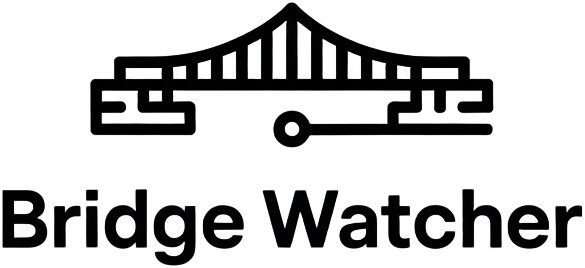
Cross-chain bridges have revolutionized blockchain interoperability, making it possible for assets and data to move seamlessly across previously siloed networks. But with this innovation comes a new attack surface: validator takeover bridge security risks. As the DeFi ecosystem grows more interconnected, understanding how compromised bridge signers endanger cross-chain security is essential for developers, investors, and anyone relying on decentralized protocols.

Why Validator Takeover Is a Bridge’s Achilles’ Heel
At the heart of most cross-chain bridges are validators, entities tasked with verifying transactions and approving asset transfers between blockchains. These validators are the gatekeepers of trust in a system that, paradoxically, aims to be trustless. When a validator set is compromised, attackers can exploit cross-chain messaging protocol risks to their advantage, authorizing unauthorized transfers and siphoning funds at scale.
This isn’t just theoretical. In 2022 alone, multiple high-profile hacks exposed the fragility of validator-based bridge models:
Notorious Bridge Hacks from Validator Compromise
-

Ronin Bridge Hack (March 2022): Attackers gained control of five out of nine validator keys on the Ronin Network, enabling unauthorized withdrawals totaling approximately $625 million in ETH and USDC. The breach exploited the bridge’s limited validator set and insufficient decentralization.
-

Harmony Horizon Bridge Attack (June 2022): By compromising just two of five validators in the Horizon Bridge’s multisig scheme, hackers approved fraudulent transactions and stole around $100 million worth of assets. This incident highlighted the risks of small validator sets in cross-chain bridges.
-

Wormhole Bridge Exploit (February 2022): Attackers exploited a vulnerability in the Wormhole bridge’s Solana-side validator verification, leading to the unauthorized minting and theft of $325 million in wrapped ETH. The exploit was possible due to improper signature verification by bridge validators.
The Mechanics Behind Compromised Bridge Validators
So how do these attacks unfold? The answer lies in the structure and security practices surrounding validators. Cross-chain bridges often rely on multisignature schemes or threshold signatures, requiring a certain number of validators to approve each transaction. But if attackers can seize enough keys or collude with insiders, they gain effective control over the bridge.
- Private Key Theft: Through phishing attacks, malware infections, or exploiting poor operational security (OpSec), attackers can steal validator private keys.
- Validator Collusion: If the validator set is small or not sufficiently decentralized, a handful of malicious actors can work together to approve fraudulent transactions.
- Poor Key Management: Validators relying on hot wallets or lacking hardware security modules (HSMs) create easy targets for sophisticated adversaries.
The February 2022 Wormhole hack is a case study in these risks, validators failed to properly verify Solana-side signatures, resulting in a $325 million loss (source). Months later, the Ronin Bridge suffered an even larger breach when five out of nine validators were compromised via social engineering and private key theft (source).
The Domino Effect: How One Breach Can Cascade Across Chains
A single successful validator takeover doesn’t just impact one platform, it can jeopardize dozens. When bridges connect multiple blockchains, as seen with Harmony’s Horizon Bridge (where only two keys were needed to drain $100 million), an attack on one chain’s validators can ripple outwards. As Hacken notes, if fifty networks are bridged and just one suffers an attack or collusion event, all connected chains could see their assets at risk (source).
This interconnectedness amplifies both opportunity and risk, making robust bridge validator best practices non-negotiable for future-proofing DeFi infrastructure.
Given this landscape, the question is no longer whether validator compromise will be attempted, but when and how it might succeed. The cross-chain bridge ecosystem must evolve beyond patchwork solutions and embrace a holistic, security-first mindset.
Building Resilience: Best Practices for Bridge Validators
Let’s break down the most effective strategies for mitigating cross-chain bridge signer risk and defending against validator takeovers:
Best Practices for Securing Bridge Validators
-

Increase Validator Decentralization: Distribute control by expanding the number of validators and ensuring they are operated by independent, reputable entities. This reduces the risk of collusion and single points of failure, as seen in the Ronin Bridge hack and Harmony Horizon Bridge attack.
-

Implement Robust Key Management: Use hardware security modules (HSMs), multi-party computation (MPC), and regular key rotations to protect validator private keys from theft via phishing, malware, or insider threats.
-

Establish Slashing and Penalty Mechanisms: Introduce financial penalties for validators that engage in malicious or negligent behavior. This incentivizes honest participation and deters collusion or misconduct within the validator set.
-

Conduct Regular Security Audits: Schedule periodic audits of bridge smart contracts, validator infrastructure, and operational procedures by reputable cybersecurity firms such as Trail of Bits or Quantstamp to proactively identify and address vulnerabilities.
-

Enhance Real-Time Monitoring and Incident Response: Deploy comprehensive monitoring tools (e.g., Chainlink OCR Monitoring, OpenZeppelin Defender) to detect suspicious validator activity and establish clear incident response protocols for rapid threat mitigation.
It’s not enough to simply increase validator count. True decentralization means ensuring validators are geographically distributed, independently operated, and subject to rigorous onboarding and monitoring standards. Regular audits, both code-based and operational, are essential for uncovering hidden vulnerabilities before they become catastrophic exploits.
Key management should be treated as a first-class concern. Hardware security modules (HSMs), multi-party computation (MPC), and frequent key rotations can dramatically reduce the attack surface. Meanwhile, slashing mechanisms and financial penalties for malicious behavior create strong disincentives for collusion or negligence among validators.
Real-World Insights: Security Audits and Community Vigilance
Security is not a one-time event but an ongoing process. Leading bridges now employ continuous risk scanning tools that monitor validator activity, flag anomalies, and trigger rapid response protocols in the event of suspected compromise. Community-driven platforms, like those tracking cross-chain messaging protocol risks: play a vital role in surfacing vulnerabilities early.
Transparency is the cornerstone of trust in this space. Publicly accessible audit reports, open bug bounties, and clear incident disclosure policies help foster a culture where security is everyone’s responsibility, from core developers to everyday users.
Looking Ahead: The Future of Cross-Chain Bridge Security
As bridges continue to underpin the next wave of DeFi growth, their security models must keep pace with both technical innovation and adversarial sophistication. Expect to see greater adoption of permissionless validator sets, cryptographic proofs (like zero-knowledge attestations), and automated threat detection powered by AI-driven analytics.
Ultimately, the lesson from every high-profile breach is clear: no single layer of defense is sufficient. Only a multi-pronged approach, combining decentralization, robust key management, proactive monitoring, and community engagement, can meaningfully reduce the risk of validator takeover.
For users, the best defense is informed diligence. Scrutinize the validator model of any bridge before entrusting it with assets. Demand transparency from protocol teams, stay updated on audit findings, and participate in community discussions around bridge security standards.
Validator takeover isn’t just a technical problem, it’s a challenge that touches every corner of the blockchain ecosystem. By championing best practices today, we can help ensure a safer, more resilient cross-chain future for everyone.






